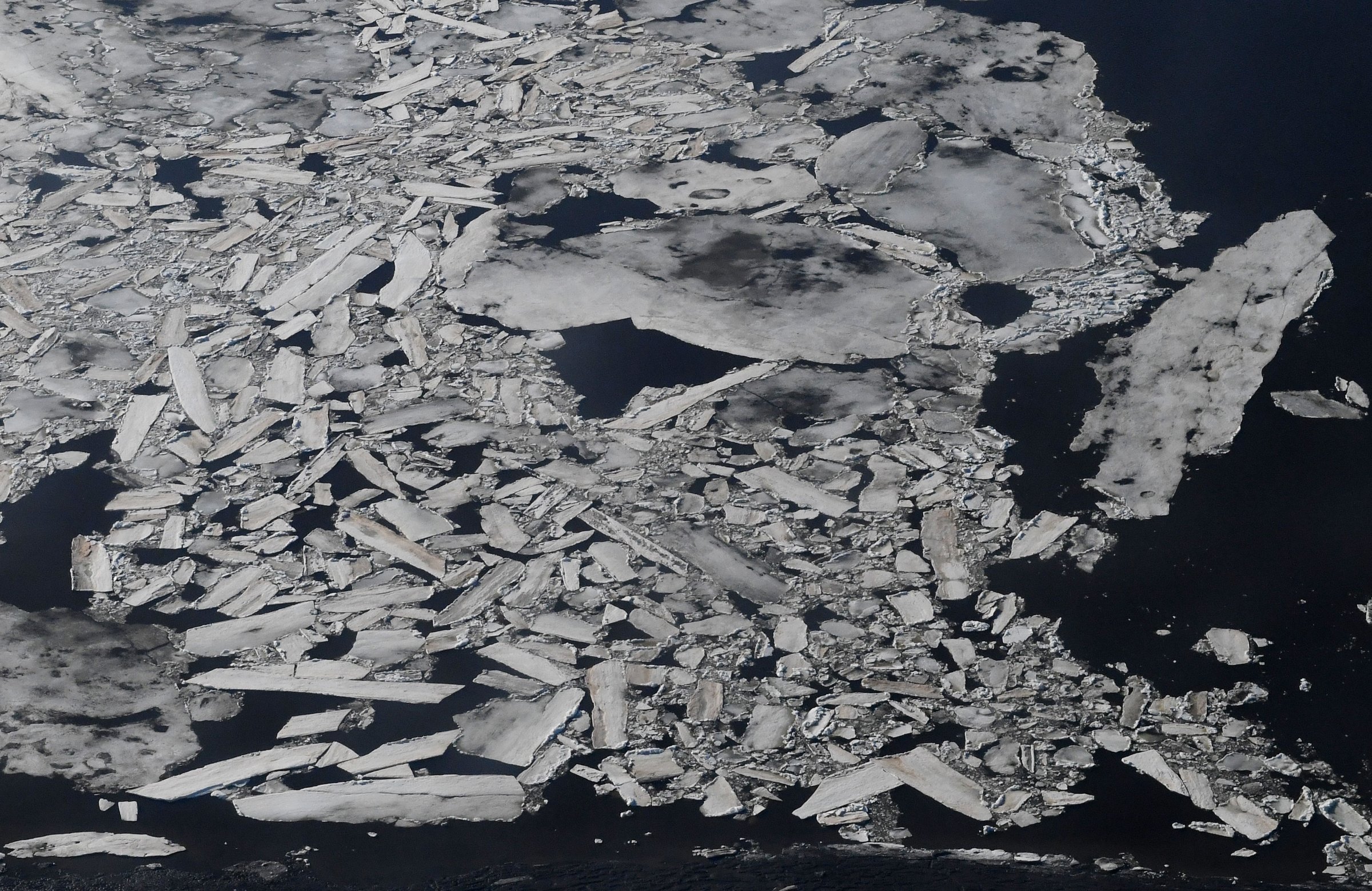
Mid-September, 2022, was not a good time to be living along the Bering Coast in Western Alaska. That was the week Typhoon Merbok, a Category One storm, struck the region, packing sustained winds of 130 km/h (80 mph), causing 15 m (50 ft.) waves and inundating communities along 1,600 km (1,000 mi.) of coastline. Republican Gov. Mike Dunleavy declared a state of disaster on Sept. 17, saying at the time, “The storm hitting the coastal regions of western Alaska is unprecedented.”
And indeed it was. Merbok was caused by unusually warm coastal waters in the North Pacific, part of the overall change in climate that has been affecting the Arctic region for the past 40 years. On Dec. 13, the National Oceanic and Atmospheric Administration (NOAA), released its 2022 “Arctic Report Card,” surveying the climatic health of the entire region, and the grades it gave were grim.
This year, Arctic air temperatures, NOAA reported, were the sixth warmest on record, going all the way back to 1900. Snow cover was the second lowest dating back 56 years across the North American Arctic and the third lowest across the Eurasian portion. The Greenland ice sheet experienced melt conditions across 36% of its surface, marking the 25th consecutive year of ice loss from the country’s land mass. The extent of Arctic sea ice was more than 36% below 1979 averages in September—a fact exacerbated by surface sea temperatures that were 3°C (5.4°F) warmer than the 1991 to 2020 average in August. Greening of the tundra is increasing, with the area covered by plant life rather than snow and ice, coming in this year at the fourth most extensive since 2000.

The report stressed that while the poor environmental health of the Arctic is bad for the planet as a whole, it is the Indigenous people and other locals who are most immediately paying the price in a host of ways. During the September typhoon, for example, homes were flooded, airport runways were underwater, populations of towns and villages were forced into public shelters and diesel fuel tanks, which power many homes, were upended. What’s more, the storm hit during peak hunting season, when many locals count on bagging moose and caribou to stock their freezers for the winter.
“Typhoon Merbok,” wrote the authors of the NOAA report, “demonstrated the inextricable linkage of environmental change and impacts on human safety, food security and health.”
The great storm was by no means the only example of the ways climate change imperils the locals. Hunting for bowhead whales—the only species that can legally be taken under global and U.S. laws—for example, is a means of subsistence for the people of the coastal Alaskan communities of Utqiagvik, Nuiqsut, and Kaktovik. The decrease in sea ice has doubled the days available for whaling, but, according to one 2021 study, has increased the number of days on which wave heights exceed 2.5 m (8 ft.) from 1.5 in 1979 to 13.1 by 2019, making the hunt more dangerous and forcing some villagers to buy larger boats that they can often ill-afford.
Seal and walrus hunting has been affected too. The retreat of sea ice forces hunters to travel as much as 160 km (100 mi.) in small skiffs to reach ice floes where their prey can be found. Many of the floes, however, are thinning, making setting foot on them yet another peril. Fatal falls through sea, lake, and river ice are on the rise too, the report reveals, disproportionately affecting Indigenous people, who live along the bodies of water.
Migratory patterns of caribou, walruses, bowhead whales, geese, and fish have also changed, making hunts harder and often less productive. All of this, the report states, affects the availability of food, but laws and policies that regulate hunting and fishing have not kept up with the changes in the Arctic environment.
“Expanding legal harvesting to other species of whales will likely soon be critical to the health and quality of life of Indigenous communities,” the authors of the report write. “But securing permissions from international and national authorities could take decades.”
Wildfires, once a rarity in Alaska, pose yet another risk. In May, a drought in southwest Alaska teed up the region for extreme fires in early summer. The smoke from the fires poses respiratory risks, disrupts hunting, and makes aviation—a critical part of the sprawling but sparsely populated state’s transit system—impossible at times. Rising summer temperatures make for sweltering homes, which typically lack air conditioning, forcing residents to keep their windows open and increasing their exposure to wildfire smoke.
Access to potable water is also on the decline, partly due to coastal flooding that mixes saltwater with freshwater sources like lakes and rivers. Loss of permafrost that was counted on to feed land basins has led to increasing drying. (The U.S. Geological Survey predicts that up to 24% of Alaska’s permafrost will be gone by the end of the century.) “In 2022,” the authors of the NOAA report write, “a tundra lake near Kotzebue, Alaska, supplying freshwater to some residents, abruptly drained. Nonetheless, quantitative projections of climate change impacts on drinking water in the Arctic are lacking.”
The NOAA report devotes only one of its many chapters to the human toll of climate change above the Arctic circle—but it is easily the most important chapter. The Arctic may not be home to a large share of the global population, but it is their home all the same. As the earth’s climate increasingly suffers, the blameless locals do too.
More Must-Reads from TIME
- Cybersecurity Experts Are Sounding the Alarm on DOGE
- Meet the 2025 Women of the Year
- The Harsh Truth About Disability Inclusion
- Why Do More Young Adults Have Cancer?
- Colman Domingo Leads With Radical Love
- How to Get Better at Doing Things Alone
- Michelle Zauner Stares Down the Darkness
Write to Jeffrey Kluger at jeffrey.kluger@time.com